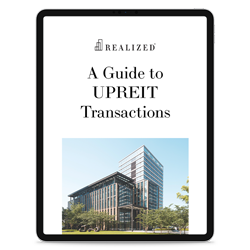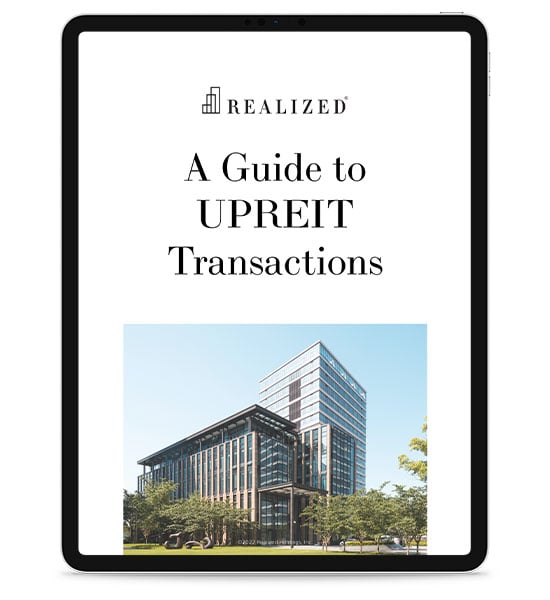
It’s absolutely essential to manage the underlying properties of an umbrella partnership real estate investment trust (UPREIT) to ensure continuous operations and income. This is why real estate investment trusts (REITs) employ several types of property management technology to address daily operations, such as tenant relationships and maintenance.
In this article, Realized 1031 shares insights into technology and innovation in UPREIT property management to help investors (like yourself) understand how these programs are reshaping the sector. By evaluating how a UPREIT adopts and implements new technologies, you can better assess the operating partnership’s efficiency and potential for growth.
Smart Buildings
As you may already know, a smart building is a structure that brings together various systems into one single IT infrastructure. These systems can include HVAC, lighting, and security. The main benefit of smart building systems is how they allow property managers to monitor and operate various aspects of operations within a single platform, along with sustainability features that help buildings lower energy costs and carbon emissions. UPREIT portfolios with smart buildings can reduce overall operating costs, position themselves as a sustainable option, and attract environmentally conscious tenants.
Data Analytics for Portfolio Optimization
UPREITs typically manage large and diversified portfolios. Advanced analytics tools, especially ones that employ artificial intelligence (AI), now help managers track tenant behavior, forecast occupancy trends, and assess property-level risks. This data-driven approach allows for more strategic decision-making, from lease structuring to capital improvements.
Tenant Experience Platforms
In the past, the tenant experience relied on face-to-face interactions and manual processes. These have evolved into digital apps and dedicated tenant platforms, which serve as a one-stop location for various transactions and processes, like the following.
- Rent Payments
- Maintenance Requests
- Manager Communication
- Property Announcements
- Amenity Booking
- Visitor Registration
Platforms with these capabilities add another level of convenience to tenants, enhancing their satisfaction and reducing turnover. Plus, these platforms reduce the need for additional staff, reducing administrative costs.
Predictive Maintenance and Automation
Traditional maintenance strategies are often inefficient and rely on reactive repairs. Maintenance workers don’t always have accurate ideas of where issues might be starting, so the process can sometimes rely on guesswork. Predictive maintenance helps make things more efficient by identifying issues before they escalate. These systems use sensors and automation to find these problems and alert managers or maintenance teams for servicing. Thanks to this more proactive approach, property managers can lower repair costs and extend the life of key systems or equipment.
Balancing Innovation With Time-tested Property Management Techniques
While the modern innovations outlined above are helpful by default, not all buildings need them, nor do UPREIT innovations directly translate to higher dividend returns. As such, UPREIT investors need to assess whether or not the REIT is able to balance the use of technology with core property management practices.
Ask questions like the following.
- Is the technology fitting for the sector or property type it’s being deployed in? For example, smart systems have a bigger impact in large office towers than in smaller retail spaces.
- Is the tech increasing profitability, or could it be taking up resources without delivering impactful results?
- Has the REIT performed well with and without the use of these UPREIT management technologies? A competitive management team should be able to combine proven strategies with modern tech and not rely solely on the latter.
UPREIT Technology in Today’s Property Management Landscape
The use of technology is a major advantage for UPREITs, making several aspects of operations more convenient and efficient. From predictive maintenance to smart buildings, these innovations can enhance tenancy satisfaction and overall portfolio performance. What’s important for investors is to choose UPREITs that embrace technology strategically instead of overly relying on it.
Sources:
https://www.spaceflow.io/blog/what-is-tenant-experience
https://www.cisco.com/site/us/en/learn/topics/networking/what-is-a-smart-building.html



